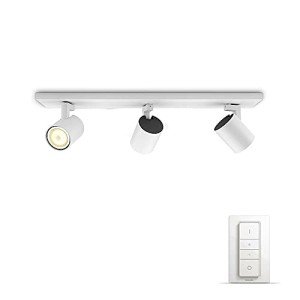Interior Lighting in the UK: A Comprehensive Guide
Interior lighting plays a vital role in producing an atmosphere, boosting performance, and revealing personal style within homes and services. In the UK, where the weather can be unpredictable, effective lighting is not just about aesthetics however also about making areas feel warm, welcoming, and practical. This short article looks into different aspects of interior lighting, incorporating types, trends, tips, and often asked concerns.
Comprehending the Importance of Interior Lighting
Lighting is frequently considered the backbone of interior design. It influences state of mind, performance, and the perceived size of spaces. The best lighting can:
- Enhance the architectural features of a room.
- Highlight art work and design.
- Improve security and security.
- Influence efficiency in workspaces.
- Develop a comfortable ambiance for relaxation.
Kinds Of Interior Lighting
Efficient lighting style typically integrates three primary types of lighting: ambient, task, and accent.
1. Ambient Lighting
This is the main source of light in a room, offering overall illumination. Typical sources include:
- Ceiling-mounted fixtures
- Chandeliers
- Recessed lighting
- Soft wall sconces
Ambient lighting creates a foundation from which other lighting types can build on.
2. Task Lighting
Task lighting focuses on particular locations to facilitate activities such as reading, cooking, or working. This type of lighting helps to decrease eye stress and can drastically affect functionality. Common sources consist of:
- Desk lamps
- Under-cabinet lights in cooking areas
- Reading lamps beside beds
- Mounted lights focused on work surfaces
3. Accent Lighting
Accent lighting adds drama and highlights specific objects or locations, such as artwork or architectural features. This kind of lighting can develop visual interest and depth in an area. Sources include:
- Picture lights
- Decorative lamps
- Uplighters
- LED strip lights along shelves
Making use of a combination of these lighting types can result in a well-balanced and multifunctional area.
Popular Lighting Trends in the UK
The interior lighting landscape in the UK continues to evolve, affected by design trends, technology, and consumer preferences. Here are some popular patterns to watch:
- Smart Lighting: The arrival of smart innovation has actually transformed how people handle lighting in their homes. Smart bulbs and systems like Philips Hue allow users to control brightness and color temperature by means of their smart devices.
- Minimalist Designs: Sleek, basic designs that blend perfectly with interiors are controling the market. Buy Smart Lighting UK with fragile frames, LED strips, and geometric shapes are particularly stylish.
- Industrial Lighting: This pattern showcases raw, bare products. Metal fixtures and Edison bulbs use a vintage touch that is both stylish and functional.
- Eco-Friendly Options: With increasing awareness of sustainability, numerous consumers are turning to energy-efficient LED alternatives and fixtures made from sustainable materials.
Tips for Effective Interior Lighting Design
Creating an efficient lighting plan requires thoughtful factor to consider of numerous factors. Here are some tips:
- Consider the Purpose of Each Room: Every space has a various function. Consider what activities will happen and what kind of lighting will support those activities.
- Layer Lighting: Employ several types of lighting within a room to develop depth and flexibility. Integrate ambient, job, and accent lighting to enhance both looks and functionality.
- Use Dimmers: Dimmers enable control over brightness levels, enabling users to adjust lighting according to state of mind and time of day.
- Incorporate Natural Light: Make the most of natural source of lights like windows. Use light, reflective colors for walls and furnishings to take full advantage of brightness.
- Consider Color Temperature: Different color temperature levels (measured in Kelvins) create various atmospheres. Warmer temperatures (around 2700K-3000K) are relaxing, while cooler temperature levels (4000K+) provide a more clinical or energetic feel.
Interior Lighting Mistakes to Avoid
To produce a well-lit space, it's important to avoid typical lighting mistakes. Here are some errors to expect:
- Underestimating Wattage: Insufficient wattage can result in dim, unwelcoming areas.
- Ignoring Scale: Fixtures that are too small for a room can look out of place, while large fixtures can overwhelm an area.
- Over-reliance on Ceiling Lights: Relying exclusively on overhead lighting can create uninviting shadows; balance with additional lighting types.
- Poor Placement: Misplaced lights can develop areas that are too intense or too dark. Strategy positionings thoughtfully.
Frequently asked question Section
1. What is the distinction in between warm white and cool white light?
Warm white light (2700K to 3000K) develops a comfortable, welcoming environment, ideal for living rooms and bedrooms, while cool white light (4000K to 5000K) is more fit for offices as it enhances concentration and clearness.
2. How can I maximize natural light in my home?
To take full advantage of natural light, use light-colored walls, tactically place mirrors to show light, and select sheer window coverings that permit sunlight to travel through.
3. How do I pick the ideal light fixtures?
Think about the size of your space, the style of your decoration, and the function of the area. Guarantee the scale of fixtures complements the room and matches the overall aesthetic.
4. Are LED lights much better than traditional bulbs?
Yes, LED lights are more energy-efficient, have a longer life-span, and can provide a variety of color temperature levels, making them a more sustainable lighting choice.
5. What should I do if certain locations of my room remain too dark?
Consider including additional task or accent lighting to brighten those areas. Floor lamps, wall sconces, and even strategically positioned table lamps can help alleviate dark spots.
Interior lighting is a vital element of home and organization design throughout the UK. Comprehending the various types, present trends, and best practices can help property owners in creating areas that are not only trendy however likewise functional. With thoughtful consideration and planning, effective lighting can change any environment, improving both atmosphere and usability for several years to come.

